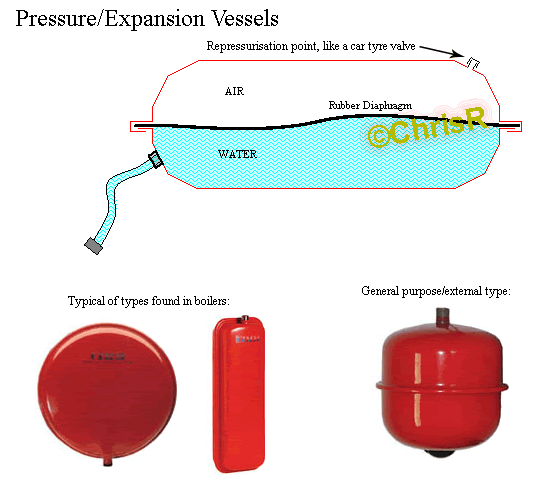Hi all
I know this has been done many times and I've searched the forum and found some excellent info.
But with this one I'm a little confused.
The pressure set on the boiler starts at 1 bar and rises as the central heating gets going to 3 bar plus. (if I have the boiler set very low I can keep it below 3 bar put if I set the temp high it goes above 3 bar) Is a Worcester bosch 24i junior by the way
So I opened a radiator to release the boiler pressure to zero. (its in a caravan so not a lot of water in the system I guess)
When I put a pressure gauge reader on the EV valve there is no pressure. So I tried pumping the EV up as I pump I can see the pressure gauge on the boiler rise and fall to zero so air is going in( I think). I pump for a while, then open a rad to let of water there must be some pressure as water comes out of the rad. I continued to do this for some time but every time I measure the pressure on the EV there is nothing - so I assume that the seal has gone and its leaking and the air is going into the boiler/water.
I then re - pressured the central heating water system to 1 bar and then measure the EV and it measures 1 bar - I started up the heating and it raised to 2.5 3 bar pretty quick
Again I measured the same pressure on top of the EV - ie it follows the boiler pressure, but no water comes out of the valve ? only air, and as I let air out the boiler pressure also drops?
This is confusing me a little as I expected water if the EV had failed and clearly some air is in the system as it escapes when the valve is pressed.
Is it possible for the air to be sat on top of the water even though the EV has failed and becomes pressurised as the boiler heats up - the more I think about this the more I convince myself this is the case. If I let all the air out and filled with water then maybe then I would see water in the valve?
I have assumed there is no blockage as when I pump I see the boiler gauge move (am I correct to assume this?)
Thanks for any help you can provide me - really appreciate it
I know this has been done many times and I've searched the forum and found some excellent info.
But with this one I'm a little confused.
The pressure set on the boiler starts at 1 bar and rises as the central heating gets going to 3 bar plus. (if I have the boiler set very low I can keep it below 3 bar put if I set the temp high it goes above 3 bar) Is a Worcester bosch 24i junior by the way
So I opened a radiator to release the boiler pressure to zero. (its in a caravan so not a lot of water in the system I guess)
When I put a pressure gauge reader on the EV valve there is no pressure. So I tried pumping the EV up as I pump I can see the pressure gauge on the boiler rise and fall to zero so air is going in( I think). I pump for a while, then open a rad to let of water there must be some pressure as water comes out of the rad. I continued to do this for some time but every time I measure the pressure on the EV there is nothing - so I assume that the seal has gone and its leaking and the air is going into the boiler/water.
I then re - pressured the central heating water system to 1 bar and then measure the EV and it measures 1 bar - I started up the heating and it raised to 2.5 3 bar pretty quick
Again I measured the same pressure on top of the EV - ie it follows the boiler pressure, but no water comes out of the valve ? only air, and as I let air out the boiler pressure also drops?
This is confusing me a little as I expected water if the EV had failed and clearly some air is in the system as it escapes when the valve is pressed.
Is it possible for the air to be sat on top of the water even though the EV has failed and becomes pressurised as the boiler heats up - the more I think about this the more I convince myself this is the case. If I let all the air out and filled with water then maybe then I would see water in the valve?
I have assumed there is no blockage as when I pump I see the boiler gauge move (am I correct to assume this?)
Thanks for any help you can provide me - really appreciate it


